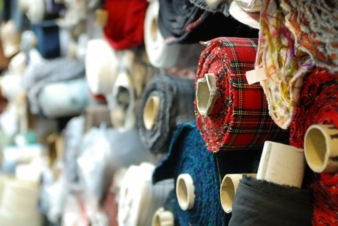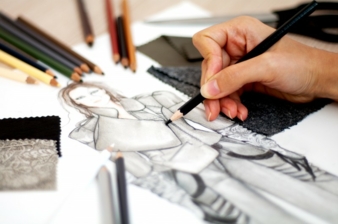24/03/2015 — auf Deutsch lesen
Lectra: Fabrics are only half of fashion
Between January and March, fashion shows will run from New York through to London and Paris, where designers will present their Autumn/Winter collections to key players within the fashion industry. The focus for inspiration is Premiere Vision, which continues to be the most important fabric show in the industry. Designer Nellie Partow, from New York, was also in Paris on the hunt for new ideas for her 2016 Spring/Summer collection. The trade show provides creative impulses and is the first step toward creating a collection. But how do designers translate the ideas they gather at the show onto the catwalk?
“I think it differs from label to label,” said Partow. For many years, she has developed ready-to-wear collections for companies such as Calvin Klein, Donna Karan and John Varvatos. “Personally, I go to Premiere Vision with a plan. There is a lot of temptation to get distracted.” The creative process varies among designers, labels and market segments, but for all designers – whether fast fashion or luxury producers – the starting point is the same: research. The journey of inspiration usually begins with a mood board, which is covered will all kinds of collected research materials including photos, fabrics and colours. For the outlines – the shape that a garment creates around the body – other designers work with abstract forms from sculpture or architecture.
Once a designer has a concept in mind – sometimes fully-formed, usually just a rough outline – the design process can begin. The designer produces sketches or drapes fabrics onto a bust. “At this point, the iterative process is really decisive,” said Fiona Dieffenbacher, director of the BFA Fashion Design programme at Parsons The New School for Design, and author of the book ‘Creative Approaches to the Design Process’. The created pattern is cut from muslin, a low-cost fabric for the production of prototypes. Here it is all about constant development.
“We ask our students to try out many design variants so they can reveal something new every time.” Other designers use CAD software such as Modaris from Lectra. Using this solution, models can be designed and then rendered in 3D with different fabrics. The software applies any changes made on screen directly to the 2D and 3D models. Fewer physical prototypes, an improved fit, the possibility of trying out a range of models and styles early on, and optimised collaboration between the two teams (design and product development) are the benefits of a virtual product development process. Using Modaris, companies can also shorten their times to market in order to release more collections each year. The outline also plays a key role in the design process.
An observer is already able to perceive the outline from a distance before they can recognise structures or fabrics. For this reason, it is vital that the designer considers the outline from all angles during the planning stage. With the Modaris virtual product development solution, the folds of a heavily draped dress can be simulated and corrected in real time directly onto a 3D bust, eliminating the need for unnecessary prototypes made of paper or muslin. In particular, big brands in the medium price range, who design without using software, discard around 50 percent of their prototypes – for some brands, the figure is closer to 70 percent.
Smaller labels in the luxury sector, on the other hand, are forced to act more economically as the development process is complex. However, whether it is a 100 Euro dress made of cotton or a 1,000 Euro dress made of silk, every designer has the same goal: a commercially successful collection. With this in mind, it is not only selecting and combining the right materials that matters, but also successfully realising a concept and bringing it to the consumer.
- Shorter model development times
- Fewer prototypes = less Time / less Costs
- Improved fit control
- Early product testing
- Collaboration between teams
- Better development of new markets through optimised fit





